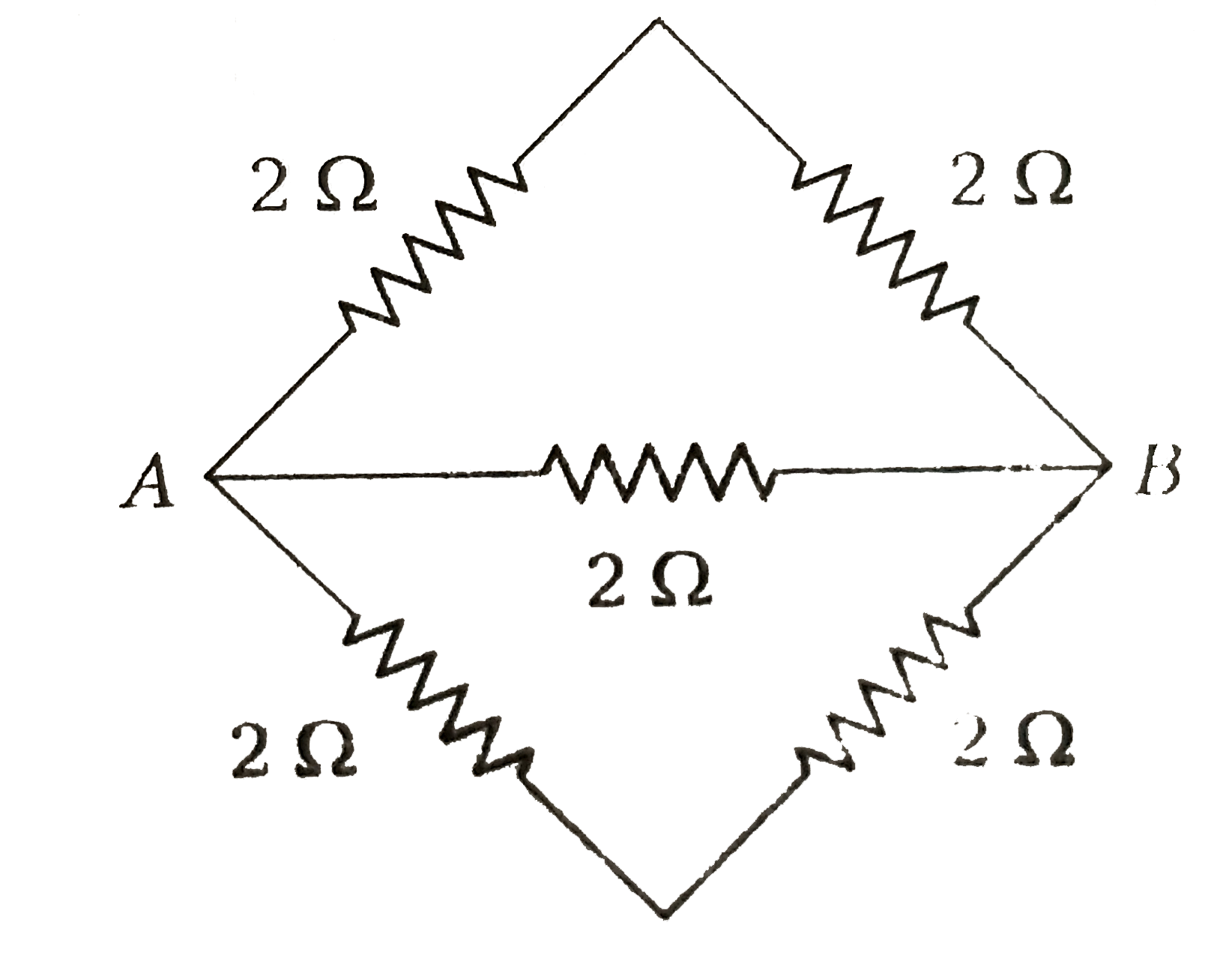For what value of unknown resistance X, the potential difference between B and D will be zero in the circuit shown in the figure ?

A
4Ω
B
6Ω
C
2Ω
D
5Ω
Video Solution
Text Solution
The correct Answer is:B
12x+6=1/21/2
⇒x+6=12⇒x=6
|
Topper's Solved these Questions
- CURRENT ELECTRICITYBOOK - ERRORLESSCHAPTER - CURRENT ELECTRICITYEXERCISE - NCERT BASED QUESTIONS (KIRCHHOFF.S LAW, CELLS)
53 Videos
- CURRENT ELECTRICITYBOOK - ERRORLESSCHAPTER - CURRENT ELECTRICITYEXERCISE - NCERT BASED QUESTIONS (DIFFERENT MEASURING INSTRUMENTS)
74 Videos
- CURRENT ELECTRICITYBOOK - ERRORLESSCHAPTER - CURRENT ELECTRICITYEXERCISE - ASSERTION AND REASON
26 Videos
- ATOMIC AND NUCLEAR PHYSICSBOOK - ERRORLESSCHAPTER - ATOMIC AND NUCLEAR PHYSICSEXERCISE - Assertion and Reason
23 Videos
- ELECTROMAGNETIC INDUCTIONBOOK - ERRORLESSCHAPTER - ELECTROMAGNETIC INDUCTIONEXERCISE - ASSERTION & REASON
20 Videos
Similar Questions
Knowledge Check
In the circuit shown, the potential difference between x and y will be
 AzeroB120 VC60 VD20 V
AzeroB120 VC60 VD20 VThe potential difference between the points A and B in the following circuit shown in the figure:-
 A23 voltB45 voltC89 voltD2 volt
A23 voltB45 voltC89 voltD2 voltThe potential difference between points A and B in the circuit shown in figure will be
 A1VB2VC−3VDnone of these
A1VB2VC−3VDnone of these
Find the potential difference between A and B as shown in the figure

View SolutionThe potential difference between points A and B in a section of a circuit shown is

View SolutionIn the circuit shown, the potential difference between A and B is:

View SolutionThe potential difference between points A and B, in a section of a circuit shown in

View SolutionWhat is the potential difference between the points A and B in the circuit diagram shown in figure ?

View Solution


